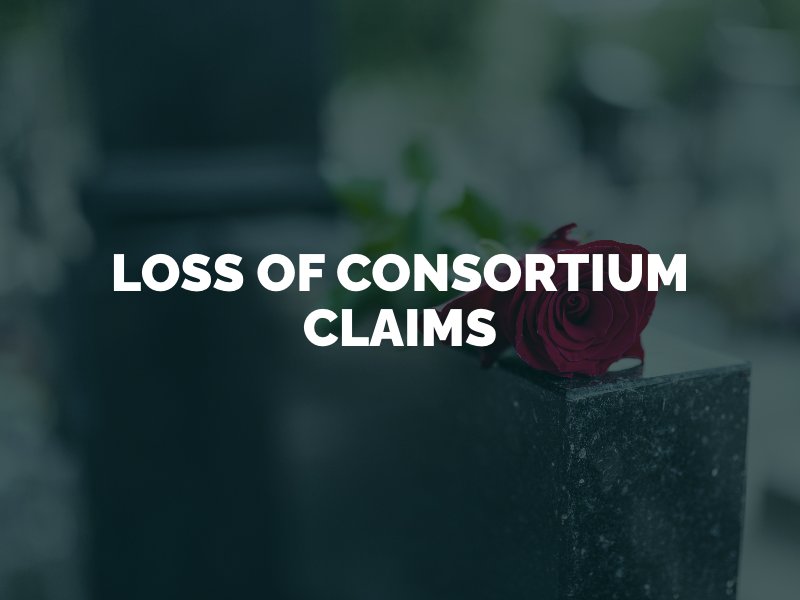A loss of consortium claim is a type of legal action that can be brought by the loved one of a person who has been severely injured or killed as a result of someone else’s negligence. It is a claim that seeks financial compensation for the personal losses suffered by the spouse or family member due to the injury, such as loss of companionship and affection.

Loss of consortium is the pursuit of damages, or financial compensation, for a loss of comfort, companionship, love, affection, intimacy, parental guidance and other benefits connected to a close familial relationship. It argues that these losses would not have been suffered had the victim of the accident not sustained his or her injury. If the injury was caused by someone else’s negligence or wrongful act, that person or party can be held liable (financially responsible) for family members’ loss of consortium.
A loss of consortium claim can be made separately – on its own – or as part of a larger personal injury lawsuit. It is often filed after a traumatic incident, such as a car crash, truck accident, slip and fall accident, workplace disaster, or medical malpractice. If a person is injured in a preventable accident and the injury renders the victim unable to engage in the activities that he or she previously enjoyed with a loved one, or unable to care for his or her spouse the same way, a loss of consortium claim may be filed.
Loss of consortium claims are most often filed by the accident victim’s spouse. A spouse may suffer losses such as time, activities, household services, companionship, care, love, affection and sexual intimacy. Another common claimant is the child of the injured party. Children may lose opportunities to spend time, play or go to events with a parent after a serious accident. An injury that causes a cognitive disability, such as a traumatic brain injury, could also lead to the loss of parental guidance, advice and support. These losses can entitle children to compensation.
Most loss of consortium claims involve catastrophic injuries, meaning long-term or permanent injuries. The injury must be severe enough to interfere with or take away the victim’s ability to care for or spend time with loved ones to have a valid loss of consortium claim. This type of damage falls under the category of “pain and suffering,” also known as noneconomic damages. It is a loss that is intangible to the person filing the claim. Other examples of noneconomic damages are emotional distress and mental anguish.
Loss of consortium damages are more difficult to calculate than economic damages such as medical costs. They are subjective and often open to interpretation. Along with other general damages in a pain and suffering award, the value of a loss of consortium claim is typically determined by a jury after hearing (and seeing) how the injury has impacted the victim. Calculating this award may involve testimony from family members, friends, medical experts and other witnesses who can attest to the impact the injury has had on the relationship.
The amount that can be awarded for loss of consortium may be limited by state law or the limits on the defendant’s insurance policy. In Colorado, a damage cap or legal limit exists on the amount of pain and suffering damages – including loss of consortium – that can be sought by a claimant. Currently, this cap is $642,180 in most civil cases, adjusted for inflation annually. In addition, loss of consortium compensation may be limited by how much the defendant has available on his or her insurance policy. It may be possible, however, to recover through the defendant’s personal assets.
To find out if you have grounds to file a loss of consortium claim in Denver, contact Fang Accident Lawyers for a free case consultation with a Denver personal injury attorney.